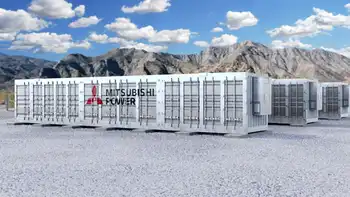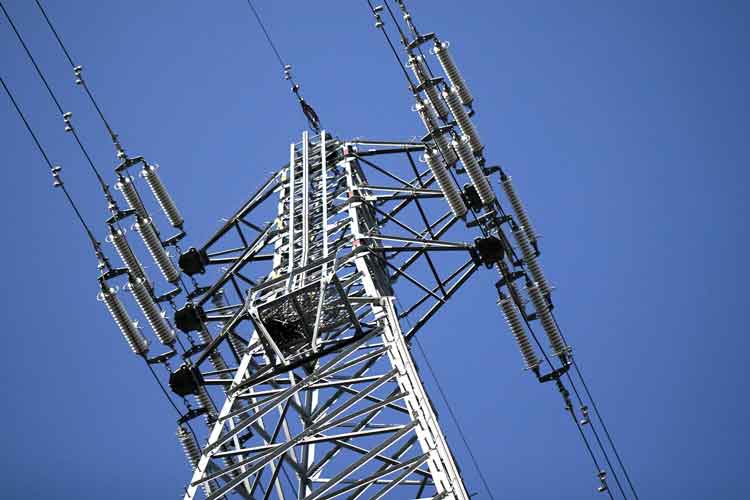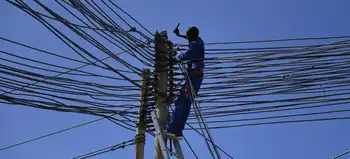San Diego Gas & Electric Orders Mitsubishi Power Emerald Storage Solution

Arc Flash Training CSA Z462 - Electrical Safety Essentials
Our customized live online or in‑person group training can be delivered to your staff at your location.

- Live Online
- 6 hours Instructor-led
- Group Training Available
SDG&E Mitsubishi Power Energy Storage adds a 10 MW/60 MWh BESS in Pala, boosting grid reliability, renewable integration, and flexibility with EMS and SCADA controls, LFP safety chemistry, NERC CIP compliance, UL 9540 standards.
Key Points
A 10 MW/60 MWh BESS for SDG&E in Pala that enhances grid reliability, renewables usage, and operational flexibility.
✅ Emerald EMS/SCADA meets NERC CIP, IEC/ISA 62443, NIST 800-53
✅ LFP chemistry with UL 9540 and UL 9540A safety compliance
✅ Adds capacity, energy, and ancillary services to CA grid
San Diego Gas & Electric Company (SDG&E), a regulated public utility that provides energy service to 3.7 million people, has awarded Mitsubishi Power an order for a 10 megawatt (MW) / 60 megawatt-hour (MWh) energy storage solution for its Pala-Gomez Creek Energy Storage Project in Pala, California. The battery energy storage system (BESS) will add capacity to help meet high energy demand, support grid reliability and operational flexibility, underscoring the broader benefits of energy storage now recognized by utilities, maximize use of renewable energy, and help prevent outages during peak demand.
The BESS project is Mitsubishi Power’s eighth in California, bringing total capacity to 280 MW / 1,140 MWh of storage to help meet California’s clean energy goals with reliable power to complement renewables, alongside emerging solutions like a California green hydrogen microgrid for added resilience.
Mitsubishi Power’s Emerald storage solution for SDG&E includes full turnkey design, engineering, procurement, and construction, as well as a 10-year long-term service agreement, aligning with CEC long-duration storage funding initiatives underway. It is scheduled to be online in early 2023.
The project will repower an existing energy storage site. It will employ Mitsubishi Power’s Emerald Integrated Plant Controller, which is an Energy Management System (EMS) and Supervisory Control and Data Acquisition (SCADA) system with real-time BESS operation and a monitoring/supervisory control platform. Mitsubishi Power leverages its decades of technology monitoring and diagnostics to turn data into actionable insights to maximize reliability, a priority as regions like Ontario increasingly rely on battery storage to meet rising demand. The Mitsubishi Power Emerald Integrated Plant Controller complies with North American Electric Reliability Corporation critical infrastructure protection (NERC CIP) standards and meets the highest security certification in the energy storage industry (IEC/ISA 62443, NIST 800-53) for maximum protection from cybersecurity risks and vulnerabilities.
For added physical safety, Mitsubishi Power’s solution employs lithium iron phosphate (LFP) battery chemistry, aligning with BESS adoption in New York where safety and performance are critical. Compared with other chemistries, LFP provides longer life and superior thermal stability and chemical stability, while meeting UL 9540 and UL 9540A safety standards.
Fernando Valero, Director, Advanced Clean Technology, SDG&E, said, “SDG&E is committed to achieving net-zero greenhouse gas emissions by 2045. We are increasing our portfolio of energy storage assets, including virtual power plant models, to reach this goal. These assets enhance grid reliability and operational flexibility while maximizing our use of abundant renewable energy sources in California.”
Tom Cornell, Senior Vice President, Energy Storage Solutions, Mitsubishi Power Americas, said, “As more and more renewables come online during the energy transition, BESS solutions are essential to support a reliable and stable grid. We look forward to providing SDG&E with our BESS solution to add capacity, energy, and ancillary services to California’s grid. Mitsubishi Power’s Emerald storage solutions are enabling a smarter and more resilient energy future for our customers in California and around the globe, with projects like an energy storage demonstration in India underscoring this momentum.”











